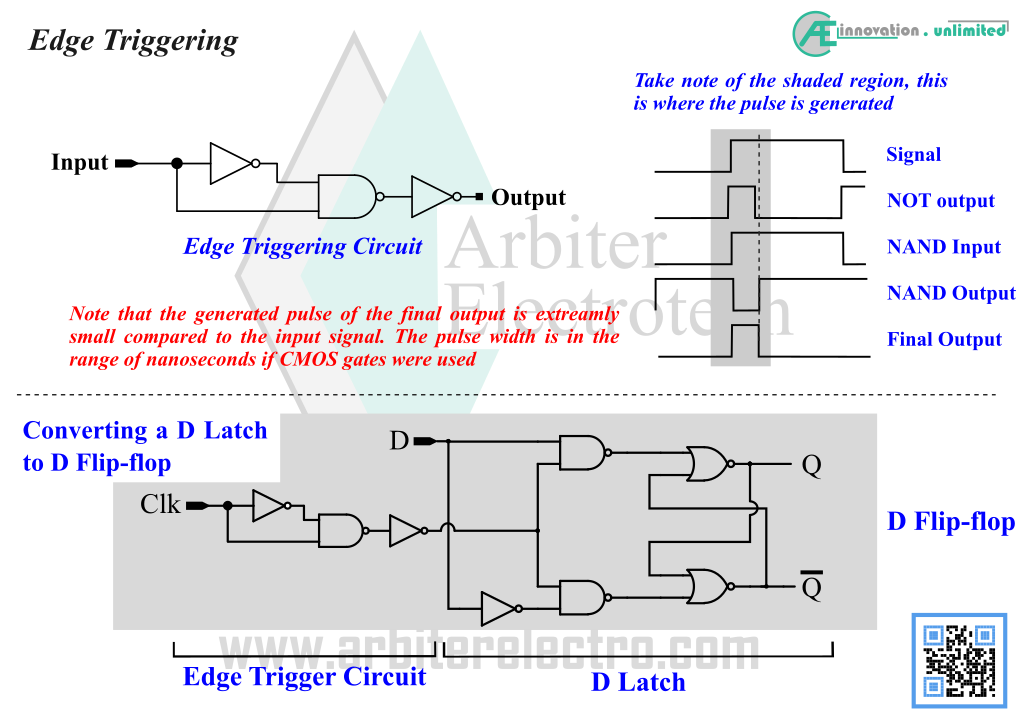H. Rahman2023-07-09T20:06:19+06:00
Trigger Fundamentals
” Trigger “ refers to an event that starts one or more larger and complex event(s). All synchronous circuits requires a specific signal to start processing the inputs. This starting signal is known as ” Trigger Signal “. Generally, in digital synchronous circuits, the clock signal acts as the trigger signal. Knowing the basics of trigger is crucial for designing any synchronous digital circuits.
Digital Trigger signal or triggering can be of 2 types
i. Level Trigger
ii. Edge Trigger
A ” Level trigger “ circuit is triggered only when specific digital state or level is applied on the trigger input. For example, an ” active HIGH ” digital circuit will only trigger whenever the trigger pin is goes from LOW to HIGH. Similarly an ” active LOW ” circuit will only trigger when the trigger pin goes from HIGH to LOW.
An ” Edge Trigger “ circuit is triggered only when specific transition of state or Edge is applied on the trigger input. Normal clock signal with 50% duty cycle, can be used to trigger an edge trigger based digital logic circuit. Edge trigger circuits require a special circuit to detect edge transition of the clock signal as edge transition signals are literally pulse with very small duty cycle
It should be noted that the triggering signal must be repetitive, no matter the type. If the signal goes from LOW to HIGH and stays HIGH, the digital system will complete the task at hand and wait for the next trigger i.e LOW to HIGH. This is the reason why clock signal must be a continuous periodic signal.
A key part of synchronous logic circuits and component is edge triggering. As mentioned earlier, edge triggering requires specialized circuits and is more complex than level triggering. Therefore, before going into the details of synchronous logic, it would be fruitful to know what edge trigger is and how it affects synchronous logic. Edge triggering circuit is used to convert transition of level to edge transition so that synchronous components can propagate the data from input to output. The circuit is simple and uses only logic gates. Refer to the diagram below.
All gates have a specific propagation delay and it is this delay that is used in this circuit to generate an edge. Refer to the diagram below. In the circuit below, the NAND gate has two inputs, one coming from the NOT gate and another coming directly from the NOT gate input. If a signal is placed on the inputs of the circuit, the signal is shown one input of the NAND gate directly and the signal on the other input comes through the NOT gate. The signal through the NOT gate arrives after the “propagation delay” amount of time. For a very small time, the inputs of the NAND gate are same and the output of the NAND gate is LOW and the NOT gate on the output converts it into a positive edge signal
Addition of an edge triggering circuit can convert an asynchronous D latch to a synchronous D Flip-flop. A D flip-flops has all the advantages and characteristics of a D latch with addition of clock signal dependency. D flip-flop is the basic component used for building shift registers and different types of binary counters.



Leave a Reply